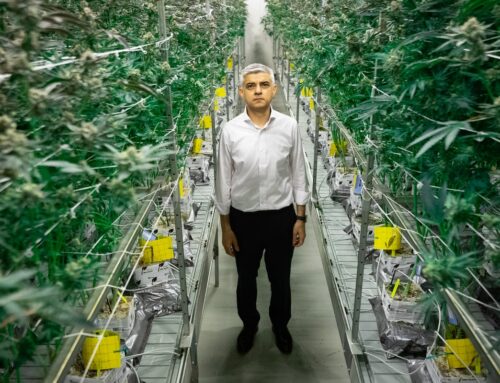How Apple’s self-driving car plans might transform the company itself
January 25, 2021
This article is part of our series that explore the business of artificial intelligence
What would an Apple-made self-driving car look like? We don’t know yet, but what we do know is that the company has serious plans to roll out its own electric self-driving car by 2024.
Apple hasn’t officially confirmed any of the information disclosed in the Reuters reports that broke the news last week. And we are still missing many details on the company’s self-driving plans. Nonetheless, the news is significant, both for Apple and the self-driving car industry.
Depending on how the situation unfolds in the next months and years, the fact that there’s a concrete date for Apple’s self-driving car plans can indicate the company is making a fundamental change to its product-development strategy.
The current state of self-driving car technology
The history of self-driving cars is very much reflective of the decades-long search for artificial general intelligence (AGI): the finish line always seems to be around the corner. But the closer we get to it, the harder it becomes.
Like many of today’s AI technologies, self-driving cars have their roots in the 1970s and 80s. But until recent years, they were only limited to academic and military research labs and science contests. In the 2010s, advances in deep learning have led to great improvements in computer vision, one of the key technologies powering self-driving cars. We’re finally seeing cars that can drive themselves in real streets.
Deep learning algorithms have helped self-driving cars come a long way toward navigating challenging environments. But the technology is far from perfect. Deep learning models are only as good as their training data. If the data is representative of all the situations the self-driving car will face, then it will have a robust performance. But the AI’s actions will become unpredictable when faced with edge cases, novel situations that happen rarely, such or a fire truck parked at an odd angle or an overturned car.
Human drivers meet novel situations all the time but can handle them thanks to their commonsense understanding of how the world works in general. For instance, you don’t need previous training to know what to do if you see a deer calf crossing the road. We understand causes and effects, intuitive physics, goals and intents, and this knowledge helps us make rational decisions (most of the time) when we face situations we’ve never seen before.
Some companies are using complementary technologies such as lidars, laser-emitting devices that create 3D maps of the car’s surroundings. Lidars can help detect obstacles and people where the computer vision system fails, but they’re not resistant to environmental factors and motion, and they do not solve the problem of causality.
Apple’s self-driving car efforts
Apple has been doing autonomous driving research under the title “Project Titan” since 2014. But unlike efforts at other companies like Uber and the Google-owned Waymo, very little is known about Apple’s self-driving car project and the company’s progress.
The initial goal was reportedly for Apple to create a car from scratch. In 2016, the company shifted focus and aimed at developing software for self-driving cars. In January 2019, Apple laid off 200 employees from the project, then went on to acquire the self-driving startup Drive.ai in June. In December 2020, the company moved project Titan under the care of John Giannandrea, its head of artificial intelligence.
The history of Project Titan indicates that while Apple has always maintained interest in self-driving cars, but there were never signs of a plan to launch a product. This changed with the Reuters report, which claimed Apple has “Apple has progressed enough that it now aims to build a vehicle.”
Apple’s product development strategy
Apple is usually not a first mover, but it certainly knows when to enter a new market. Apple II was not the first personal computer, but it was the first very successful one, building on top of a decade of rapid advances in storage and processing technologies and the gradual decrease of the costs of manufacturing the pieces required to assemble a home computer.
The iPod was not the first device to play audio files, but it launched at a very opportune time, when digital media adoption had reached critical mass and the market was ripe for high-end consumer products. The same with iPhone, which entered the scene as mobile communications, internet, and computing had become common thanks to the likes of Nokia and Blackberry. There was nothing new to the iPhone, but it was a novel combination of “an iPod, a phone, and an internet communicator.”
If you look at Apple’s other products, the HomePod, Apple Music, Apple Watch, they were never the first of their kind, but a revolutionized version of what already exists. Maybe with the exception of the graphical user interface, Apple has seldom ventured into areas where the market has not been already established.
But the self-driving car industry is still marked with missed deadlines by all major players. Despite tremendous progress, there is still no real self-driving car solution. Uber and Waymo’s self-driving cars have logged millions of miles, but they are still attended by safety drivers. Tesla offers a fully autonomous Autopilot feature— but still requires drivers to keep their hands on the steering wheel when it is enabled.
While most experts agree that we’ll eventually have driverless cars on our roads, many questions remain, such as what they will look like, how and if they will share roads with human-driven cars, what will be the regulatory requirements, and will the meaning of car ownership change.
Training data for the AI algorithms
There’s one very convincing reason Apple would enter a market as immature and risky as self-driving cars. Unlike other sectors that Apple has conquered, self-driving cars are heavy on artificial intelligence and warrant a different development strategy. The deep learning algorithms used in self-driving cars require huge volumes of training data obtained from driving cars on roads. Therefore, aside from sound engineering and design, you need an AI factory built on top of a solid data infrastructure.
Waymo and Uber have been collecting their data by test-driving their cars in different cities. Tesla, on the other hand, has directly collected its data from the hundreds of thousands of cars it has sold to consumers.
According to reports, Apple had done some small-scale road testing in the past, but downgraded the effort in 2019. The plan to launch a consumer-level self-driving car might indicate that Apple will be adopting a strategy that is similar to Tesla, which would be a bit controversial for a company that takes pride in collecting very little data from customers.
It can also indicate that like Tesla, Apple will roll out its self-driving technology in a phased manner, gradually developing and fine-tuning its AI algorithms as it collects more data from its cars. This, too, would go against Apple’s nature of delivering near-perfect products right off the bat. That, of course, can change if the company figures out another way to collect hundreds of millions of miles worth of driving data before 2024
Who will buy Apple’s self-driving car?
According to Reuters’ report, Apple aims to build “a vehicle for consumers.” In this respect, too, Apple’s approach is like that of Tesla and unlike Waymo and Uber, which plan to launch robo-taxi services.
But selling directly to consumers raises the question, how much will the car cost? The benchmark we have is Tesla’s electric vehicles with Autopilot support, which cost between $35,000 and $120,000. But while Tesla is using a pure–computer vision approach, relying only on deep learning and minor help from a front radar and sensors to navigate roads, Apple plans to include lidars on its self-driving cars.
According to a 2017 estimate, lidars used in self-driving cars can cost between $8,000 and $85,000, and each self-driving car requires several lidars, which can sometimes triple the price of the car. This might force Apple to reconsider its product delivery strategy and shift to a providing an autonomous ride-hailing service in the future.
But the industry is changing rapidly. There are now $100 and $500 lidars, and Apple has developed its own lidar scanners at a cost that makes it affordable to embed them in the iPhone 12 and iPad Pro devices. For its self-driving car, Apple will be using its own lidars and partner with other manufacturers. So, the consumer-level Apple car will probably be more expensive than the Tesla, but by 2024, the costs of the hardware might have dropped to the point that the difference will be negligible.
Giving up full control?
According to the Reuters report, Apple is looking to outsource the manufacturing of the car, which would be in contrast to the company’s preference to maintain full control over its product stack. Apple controls the hardware, operating system, and the app store of its phones, watches, TVs, and computers.
But even though Apple has decades of experience in running manufacturing plants and managing complex supply chains, building cars is a different challenge altogether, which would warrant partnering with a car manufacturer.
An alternative would be for Apple to acquire an automotive company. With more than $200 billion in liquid assets, the company could easily buy many top-tier carmakers, including General Motors and Volkswagen, and build vehicles at scale.
The future of Apple’s self-driving car?
Throughout its history, Apple has set an example of design, performance, and durability (and high prices). Today, companies that deliver great products are compared to Apple (e.g., the Apple of gaming, the Apple of cars, etc.). But this history of perfection has also set high expectations for Apple. Where consumers allow other companies to fail and recover, they expect Apple to be flawless. And at the moment, self-driving car technology is anything but flawless.
This might partly be the reason that Apple has been reserved until recently and only leaked information about its self-driving car project through unnamed sources. It gives the company the maneuverability to backtrack on parts of its plans as the industry and its own project develop. The self-driving car industry is changing rapidly, and I wouldn’t be surprised if what we see in 2024 is very different from the initial report.
But what’s for sure is that Apple is serious about creating a self-driving car, and its engagement can have a serious impact on the future of transportation and the company itself.
Search
RECENT PRESS RELEASES
Microsoft dives into the handheld gaming PC wars with the Asus ROG Xbox Ally
SWI Editorial Staff2025-06-08T17:47:09-07:00June 8, 2025|
Denny Hamlin manages Michigan mileage, seals third Cup Series win of season
SWI Editorial Staff2025-06-08T17:47:02-07:00June 8, 2025|
Denny Hamlin wins FireKeepers Casino 400 at Michigan International Speedway in epic finish
SWI Editorial Staff2025-06-08T17:46:55-07:00June 8, 2025|
In-Season Challenge: Seeding update after Michigan
SWI Editorial Staff2025-06-08T17:46:51-07:00June 8, 2025|
Two Major Support Levels to Watch for Bitcoin Price This Week
SWI Editorial Staff2025-06-08T17:45:48-07:00June 8, 2025|
The huge sums energy firms get to NOT provide power
SWI Editorial Staff2025-06-08T16:43:19-07:00June 8, 2025|
Related Post




